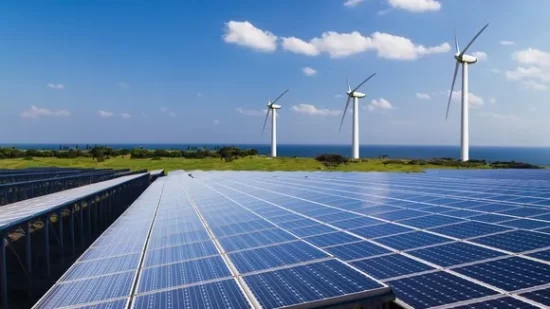At COP28 in Dubai, last December, countries were asked to contribute to a global stocktaking report on climate change mitigation efforts including the building of renewable energy projects.
The agreed-to-goal for the 198 countries in attendance was to triple renewable energy capacity and double the annual rate of energy efficiency improvements each year beginning in 2024 and going on to 2030. By tripling renewable energy capacity from 2022 to 2030, the planet would meet the 11,000 GigaWatt/Hours (GWh) target that would put us on a more sustainable path to reach carbon net-zero energy emissions by 2050.
If the results from 2023 are a model to go by, then we might hit both the 2030 and 2050 goals. In 2023, we saw almost a 50% increase in installed renewable wind and solar energy capacity. China set the pace for the rest of the world producing more than half of the new renewable projects.
Until these 2023 results, the world was on pace for a number well below the 11,000-GWh-desired goal. The latest IEA report describes the market conditions indicating at best achieving 7,300 GWh of new renewable capacity by 2028, a 2.5 times multiple in growth, leaving us well short of the 2030 goal.
Why are countries falling short of hitting COP28 global targets to mitigate global warming? The IEA report cites four:
- Delayed creation and implementation of policies to address the low-carbon transition citing challenges in the macroeconomic environment;
- Insufficient investment in grid infrastructure that prevents its faster expansion and the integration of renewable energy sources;
- Cumbersome administrative barriers to building new renewable energy capacity along with nimbyism (not-in-my-backyard) social resistance;
- A lack of adequate sources to finance renewable energy projects, particularly in emerging and developing countries.
The IEA report tries to address these ongoing challenges with options that include:
- Simplifying approval procedures, particularly for small renewable projects;
- Creating fast-track permitting where warranted to achieve shorter timelines for projects to get built and integrated with existing grid infrastructure;
- Increasing the minimum capacity requirement for environmental impact assessments without compromising strong sustainability measures;
- Aligning and integrating the planning and execution of transmission and distribution grid projects since at the current pace it takes 5 to 15 years for new grid infrastructure and 1 to 5 years for new energy projects;
- Ensuring that regulatory risk assessments allow for anticipatory investments;
- Reducing the financial risk for public utilities partnering with renewable project developers.
- Standardizing power purchase contracts and backing them up with government guarantees;
- Indexing energy contract prices to various economic indicators specific to each renewable technology;
- Creating regulatory reforms to reduce the risk of investing in renewable energy projects;
- In developing economies, reducing the cost of financing renewable energy projects.
In this report, the IEA doesn’t mention the reconciling of household rooftop solar photovoltaics with utilities and the latter’s business model, to encourage new distributed energy capacity without penalizing consumers for their energy contributions.
The biggest uptick in growth for utilities is expected to be in onshore wind projects and utility-scale solar photovoltaics. The unknown quantity in the renewable equation is consumer adoption of rooftop solar which remains uncertain because of resistance from utilities and initial built costs. High retail electricity prices plus government support for low-cost financing should provide a stimulus to consumers to make rooftop solar investments.
The IEA report forecasts that by 2028, electricity generation will reach 14,430 Terawatt/Hours (TWh), an increase of nearly 70% from 2022. Over the next five years, renewable energy’s contributing milestones will include:
- In 2024, variable renewable energy generation will surpass hydroelectric capacity;
- In 2025, renewable energy will surpass coal-fired power generation;
- In 2025, renewable wind energy will surpass nuclear power generation;
- In 2026, solar photovoltaic capacity will surpass nuclear power generation;
- In 2028, solar photovoltaic capacity will surpass renewable wind power generation;
- By 2028, 68 countries will use renewables as their main power generation source.
The IEA believes that instituting the reforms suggested in its report should accelerate the growth in renewable energy capacity to reach over 8,130 GWh by 2028, putting the 11,000 target within reach by 2030.
















